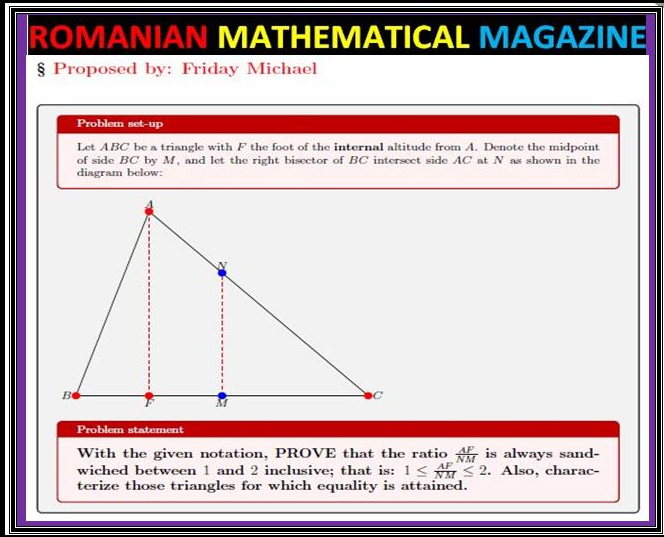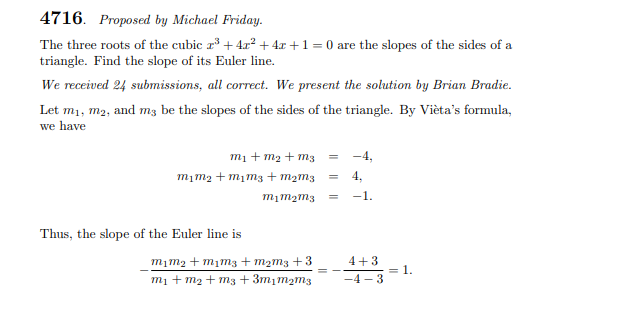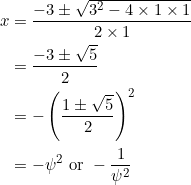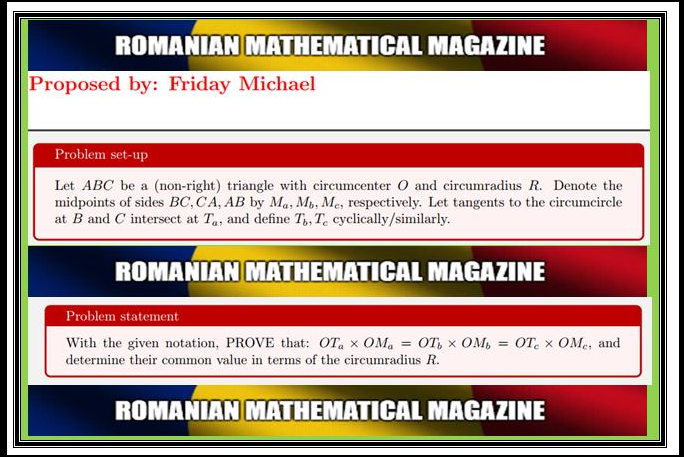
Right now we’ll use this problem to obtain another characterization of right triangles, in addition to the ones here.
Stretched image
To start with, here’s an enlarged version of the above image:

In any triangle, the ratio of the length of an internal altitude to the “length” of a right bisector is always sandwiched between ![]() and
and ![]() .
.
Strict inequalities
In general, the ratio under consideration lies strictly between ![]() and
and ![]() .
.
Details here.
Details here.
Details here.
Together we have: ![]() .
.
Special instance
When the ratio under consideration equals ![]() .
.
Use similar triangles. Or else use the fact that: ![]() from example 1. Take
from example 1. Take ![]() so that
so that ![]() . Simplify to get
. Simplify to get ![]() .
.
Details here.
Takeaway
Let ![]() be a triangle in which
be a triangle in which ![]() is the foot of the internal altitude from vertex
is the foot of the internal altitude from vertex ![]() ,
, ![]() is the midpoint of side
is the midpoint of side ![]() , and the right bisector of
, and the right bisector of ![]() intersects
intersects ![]() (or
(or ![]() , depending on which is greater) at
, depending on which is greater) at ![]() . Then the following statements are equivalent:
. Then the following statements are equivalent:
 is a right triangle in which
is a right triangle in which 
 .
.
Tasks
- (Silver ratio) Suppose that
 is a triangle containing an obtuse angle
is a triangle containing an obtuse angle  . Let
. Let  be the foot of the altitude from
be the foot of the altitude from  and let the right bisector of
and let the right bisector of  intersect
intersect  at
at  .
.
- PROVE that
 , where
, where  is the midpoint of
is the midpoint of  .
. - Find a triangle for which
 , the silver ratio.
, the silver ratio.
- PROVE that


 Solve it.
Solve it.